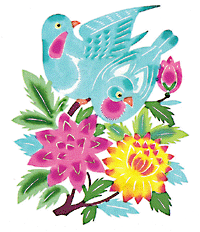EDITOR'S
NOTE
When enthusiasm blossoms to full-blown obsession
 You
may have already noticed this issue's back cover. We're inviting
those of you with a unique collection, one that you would like
considered for an upcoming Magazine article about Chicago collections,
to write and tell us what makes your set of stuff so special.
Knowing Chicago alumni, the editors expect to hear from persons
with definitive assemblages of all kinds. If you're like me, however,
you won't be among the eager respondents. Instead, you are someone
who has in your possession the beginnings of many collections,
souvenirs of enthusiasms that never blossomed into full-blown
obsessions.
You
may have already noticed this issue's back cover. We're inviting
those of you with a unique collection, one that you would like
considered for an upcoming Magazine article about Chicago collections,
to write and tell us what makes your set of stuff so special.
Knowing Chicago alumni, the editors expect to hear from persons
with definitive assemblages of all kinds. If you're like me, however,
you won't be among the eager respondents. Instead, you are someone
who has in your possession the beginnings of many collections,
souvenirs of enthusiasms that never blossomed into full-blown
obsessions.
Take
the Chinese paper-cut at right. No expert on the subject, I know
only enough to know that this particular brightly dyed piece of
tissue-thin paper is the offspring of an ancient and far more
elaborate art. And if I happen to see any of these inexpensive
items when shopping in a city's Chinatown, I buy a few, saving
some and using the others as they're intended: to decorate greetings
and gifts. My collection of Polish paper-cuts or wycinanki-which
began earlier and which was the reason I noticed Chinese paper-cuts
in the first place-is not much more extensive.
Not
that having lots of some particular type of thing is, in and of
itself, enough to turn a set into a collection. When she was ten
or so, my younger daughter (with help from her mother, other relatives,
and friends) quickly assembled a menagerie of 70-plus Beanie babies.
She still has them all, stored in one of those see-through plastic
bins bought by people desperately attempting to master their things,
but even when the Beanies were a part of her daily life, they
never excited her interest as a whole greater than the sum of
its parts-which is the belief that seems to drive the collecting
impulse.
Some
people have collections, like some heroes have greatness, thrust
upon them. A bachelor living on the water gets his first set of
dish towels with a duck motif as a gift; another friend or relative
sees the ducks and divines a solution to the what-to-get-the-guy-who-has-everything
dilemma. Three duck pillows, two mallard lamps, and one Canadian
goose welcome mat later, a "collection" has emerged.
Pretty soon, the owner of all of this duckiana may himself become
the duck hunter. Even if he doesn't, the collection may take on
a life of its own, requiring an act of will (or marriage) to derail
it.
Lots
of people, of course, have "collections" of books, videos,
records, CDs, and so on. But again I would argue that these assemblages
don't qualify as true collections, objects amassed not for the
performance conveyed in the medium but rather for the thing itself:
blue-and-white pottery because it is blue-and-white pottery; a
rock or a leaf from every hike along the Appalachian Trail; every
Barbie outfit, still in its original packaging.
At
the same time, those of us who don't collect are thoroughly in
awe of those who do: your sense of purpose, your desire, your
ability to keep your eye on the prize. We can't wait to see the
wonders you've assembled.-
M.R.Y
A
clarification and a correction
In
the December/00 profile of President Don Michael Randel ("First
Chair," page 20) a sentence summarizing the work of a Cornell
University task force on undergraduate education relied on a sentence
in "An Administrative Biography of Don Randel," by Adam
Kissel, a graduate student in the Committee on Social Thought.
In the February/01 "Virtual Chicago" (page 15), an incorrect
URL was given for the "That Other Fair-Chicago World's Fair:
A Century of Progress" project, whose Web site will go online
sometime this summer (check the library's digital collections
at www.lib.uchicago.edu/e/dl/diglistr.html).

![]()
 You
may have already noticed this issue's back cover. We're inviting
those of you with a unique collection, one that you would like
considered for an upcoming Magazine article about Chicago collections,
to write and tell us what makes your set of stuff so special.
Knowing Chicago alumni, the editors expect to hear from persons
with definitive assemblages of all kinds. If you're like me, however,
you won't be among the eager respondents. Instead, you are someone
who has in your possession the beginnings of many collections,
souvenirs of enthusiasms that never blossomed into full-blown
obsessions.
You
may have already noticed this issue's back cover. We're inviting
those of you with a unique collection, one that you would like
considered for an upcoming Magazine article about Chicago collections,
to write and tell us what makes your set of stuff so special.
Knowing Chicago alumni, the editors expect to hear from persons
with definitive assemblages of all kinds. If you're like me, however,
you won't be among the eager respondents. Instead, you are someone
who has in your possession the beginnings of many collections,
souvenirs of enthusiasms that never blossomed into full-blown
obsessions.